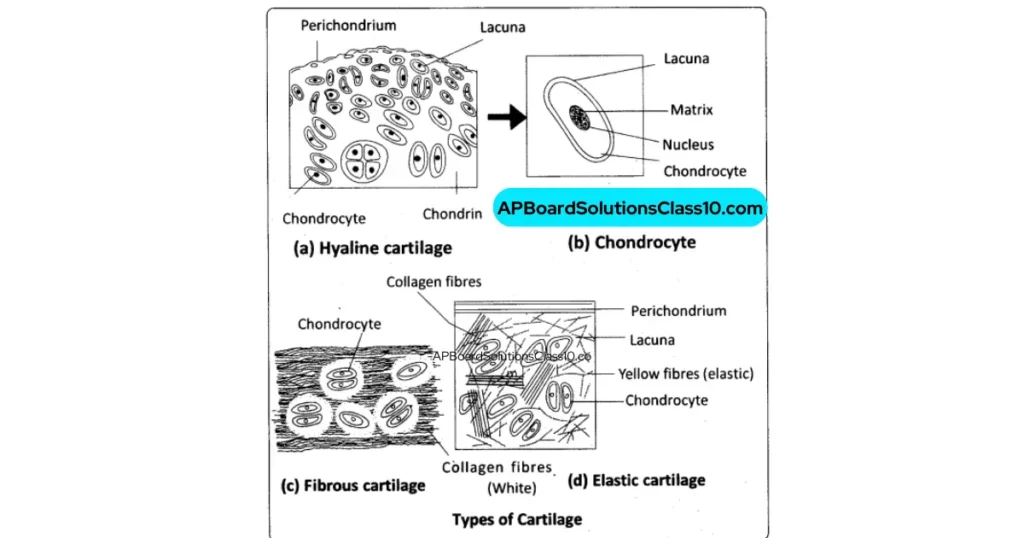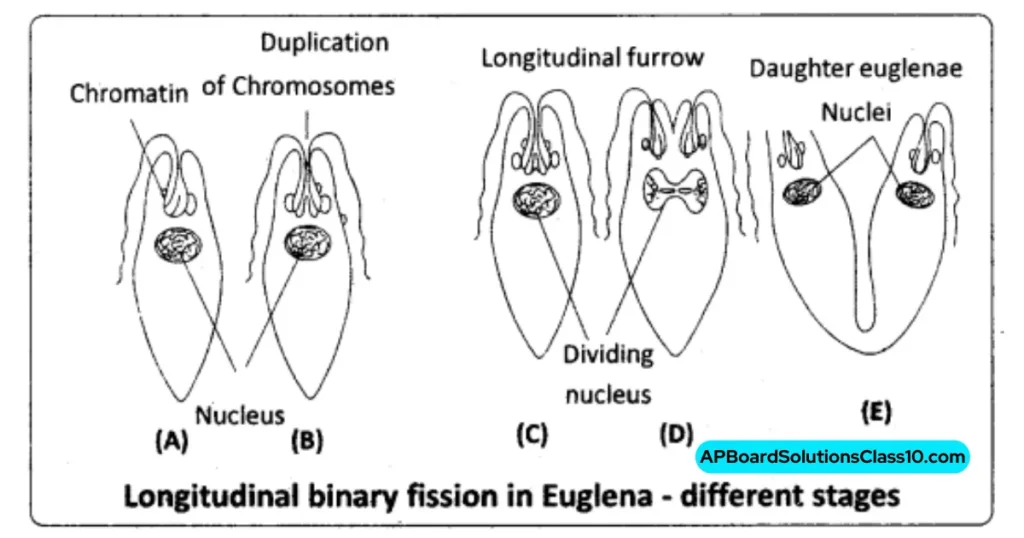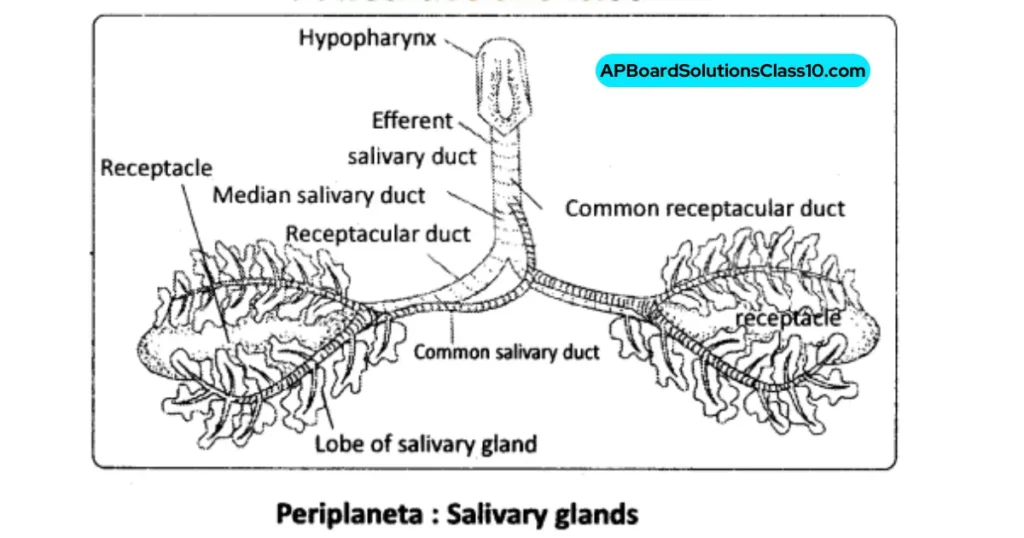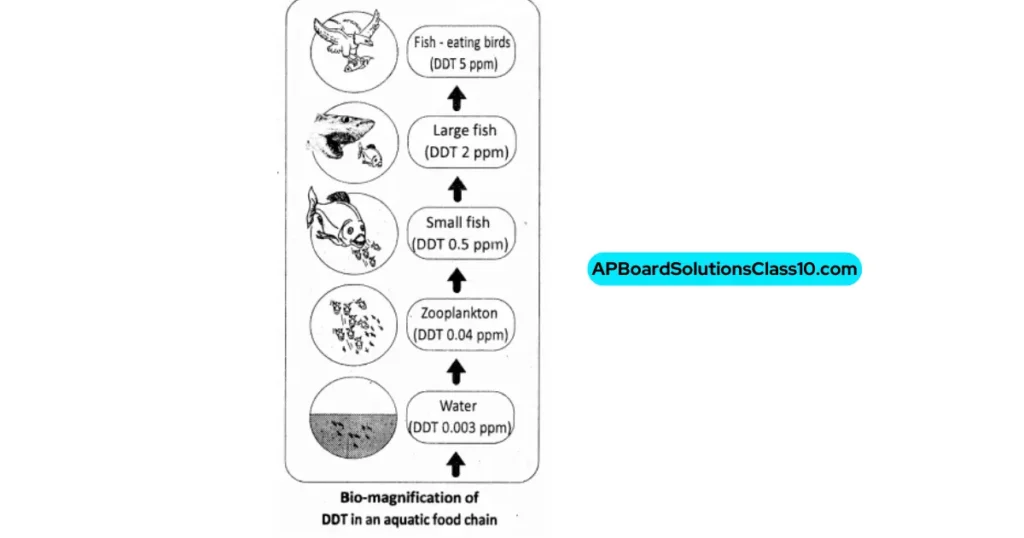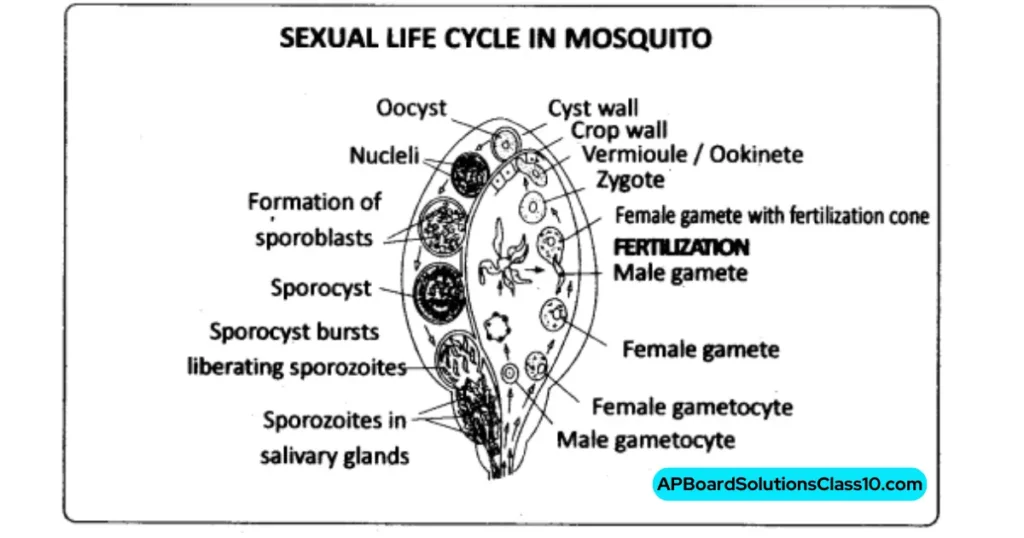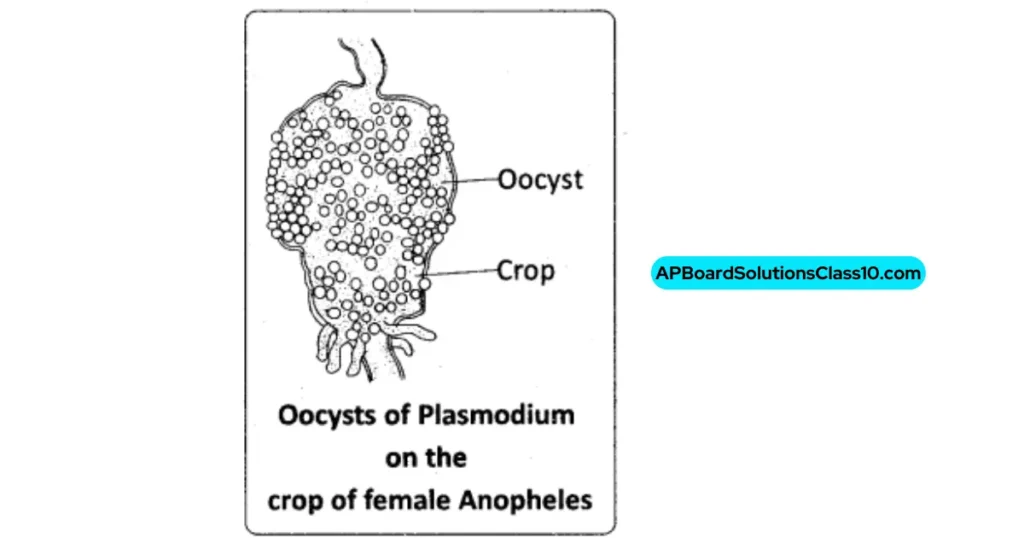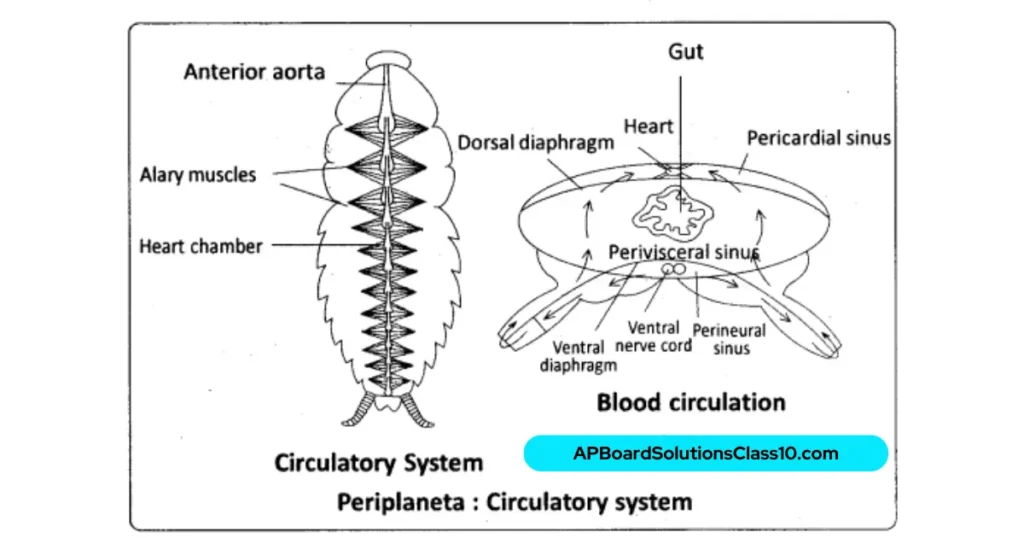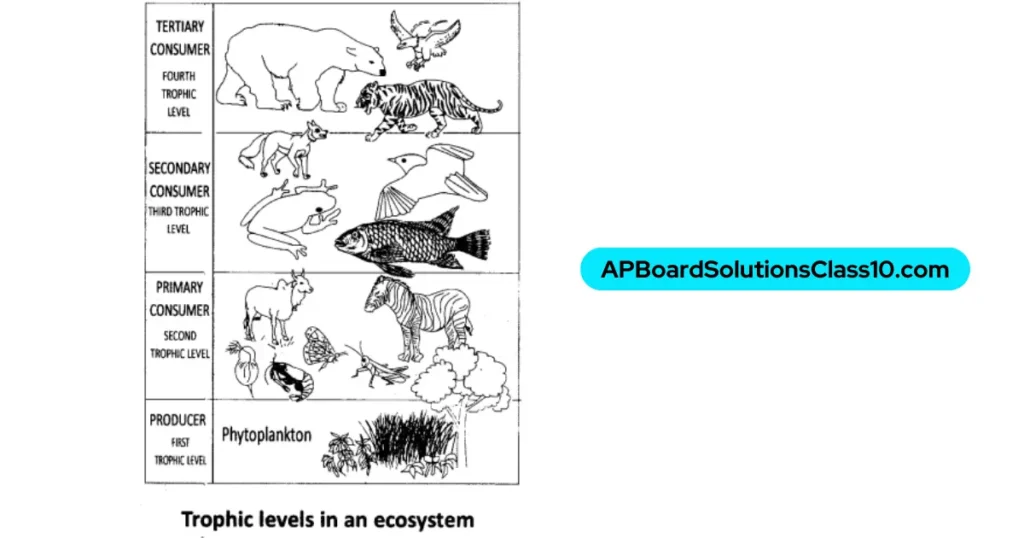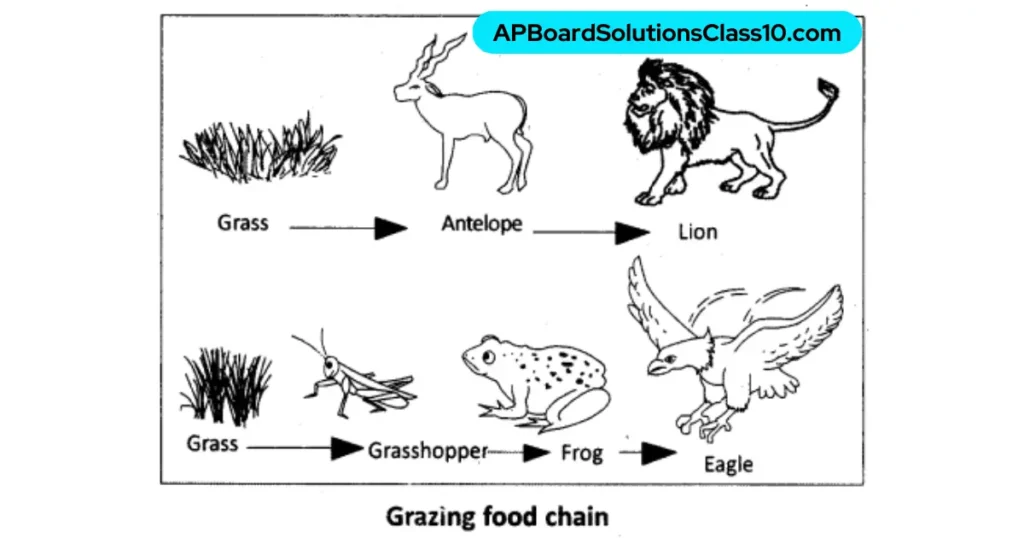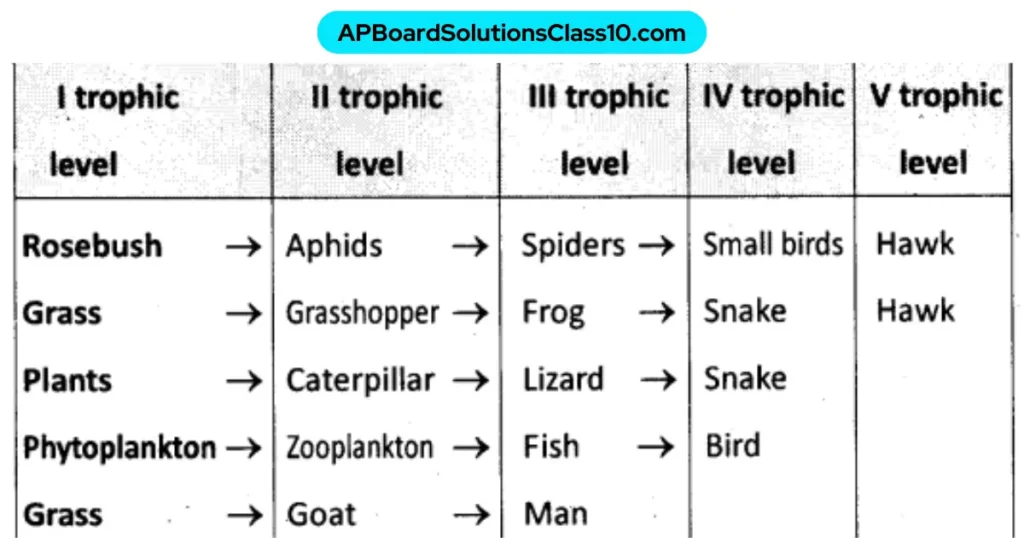You can find the questions and answers related to the First Year Zoology Question Papers May 2016 related to AP Inter Board. Not only these but also you can find all the interrelated textbooks and study materials notes Bitbanks on the AP Board Solutions Class 10 website.
AP Inter First Year Zoology Question Paper May 2016 Access now
Download AP Inter 1st Year Sanskrit Model Paper Set 7 with Answers Here
Time : 3 Hours
Max. Marks: 60
General Instructions:
Note : Read the following instructions carefully.
- Answer All questions of Section – A. Answer any six questions in Section – B and answer any two questions in Section – C.
- In Section – A. questions from Sr. Nos. 1 to 10 are of Very Short Answer Type. Each question carries two marks. Every answer may be limited to 5 lines. Answer all these questions at one place in the same order.
- In Section – B, questions from Sr. Nos. 11 to 18 are of Short Answer Type. Each question carries four marks. Every answer may be limited to 20 lines.
- In Section – C, questions from Sr. Nos. 19 to 21 are of Long Answer Type. Each question carries eight marks. Every answer may be limited to 60 lines.
- Draw labelled diagrams wherever necessary in Sections – B and C.
Section – A (10 × 2 = 20)
Note : Answer all the questions in 5 lines each.
Question 1.
Differentiate between Protostomia and Deuterostomia.
Answer:
a) Protostomia : The eumetazoans in which blastopore develops into mouth are referred to as the protostomians (eg: Annelida)
b) Deuterostomia : These are eucoelomates in which anus is formed from or near the blastopore (eg : Echinodermata)
Question 2.
What is the haematocrit value ?
Answer:
The percentage of total volume occupied by RBCs is called “haematocrit value”.
Question 3.
What is cephalization ? How is it useful to its possessors ?
Answer:
Cephalization is concentration of nerve and sensory cells at the anterior end. As a result of cephalization, bilaterally symmetrical animals can sense the environment into which they enter and respond more efficiently and quickly.
Question 4.
What is a sesamoid bone ? Give an example.
Answer:
Sesamoid bones are formed by ossification in tendons, eg: Patella (knee cap).
Question 5.
What is metagenesis ? Animals belonging to which phylum exhibit metagenesis ?
Answer:
The cnidarians which exist in both forms namely polyp and medusa exhibit alternation of generations called metagenesis. Polyps by asexual method called budding produse medusae. Medusae by sexual method called syngamy give rise to polypoid forms.
Question 6.
What are Jacobson’s organs ? What is their function ?
Answer:
Jacobson’s organs, the specialized olfactory structures and are highly developed in lizards and snakes.
Question 7.
Distinguish between Proter and Opisthe.
Answer:
During transverse binary of paramecium, two daughter paramecia are formed. The upper or anterior one is proter which receive upper contractile vacuole, cytopharynx and cytostome of its parent. The lower or posterior daughter is opisthe which receives the posterior contractile vacuole only.
Question 8.
What is a Kinety ?
Answer:
A longitudinal row of kinetosomes together with kinetodesmata constitute a unit called kinety.
Question 9.
The eggs of Ascaris are called ‘Mammillated eggs’. Justify.
Answer:
In Ascaris each egg is surrounded by a protein coat with rippled surface. Hence the eggs of Ascaris are described as mammillated eggs.
Question 10.
Distinguish between neuston and nekton.
Answer:
a) The animals living at the air – water interface constitute the neuston.
b) The animals such as fishes, amphibians, water snakes which are capable of swimming constitute the nekton.
Section – 3 (8 × 3 = 24)
Question 11.
What is the “evil quartet” ?
Answer:
The following are the four major causes for accelerated rates of species extinction in the world. These causes are referred to as evil quartet.
a) Habitat loss and fragmentation : These are most important reasons for the loss of biodiversity.
b) Over exploitation : When need turns to greed, it leads to over exploitation.
c) Invasion of Alien species: When Alien species are introduced into a habitat, they turn invasive and establish themselves at the cost of indigenous species.
d) Co – extinctions: In an obligate association between a plant and an animal, if a plant becomes extinct, the animal also becomes extinct as seen in a parasitic and host association.
Question 12.
Describe the three types of Cartilage.
Answer:
The three types of cartilage are
1. Hyaline cartilage
2. Elastic cartilage
3. Fibrous cartilage.
1. Hyaline cartilage : It is bluish-white, translucent and glass – like cartilage. Matrix is homogeneous and shows delicate collagen fibres. It is the weakest and the most common type of all the cartilages. Perichondrium is present except in articular cartilages. It forms the embryonic endoskeleton of bony vertebrates, endoskeleton of cyclostomes and cartilaginous fishes. It forms the articular cartilages (free surfaces of long bones that form joints), costal cartilages (sternal parts of ribs), and the epiphyseal plates. It also forms the nasal septal cartilage, cartilaginous rings of trachea, bronchi and cartilages of larynx.
2) Elastic cartilage: It is yellowish due to elastic fibres. Matrix has abundance of yellow elastic fibres in addition to collagen fibres. It provides strength and elasticity. Perichondrium is present. It is found in the pinnae of the external ears, Eustachian tubes and epiglottis.
3) Fibrous cartilage : Matrix has bundles of collagen fibres. Perichondrium is absent. It is the strongest of all types of cartilages. It occurs in the intervertebral discs and pubic symphysis of the pelvis.
Question 13.
Write short note on the salient features of the anthozoans.
Answer:
Class – Anthozoa or Actinozoa :
- They are commonly referred to as sea anemones.
- They are sedentary and only polypoid in form.
- Coelenteron is divided into several compartments by vertical septa called mesenteries.
- Mesoglea contains connective tissue.
- Cnidocytes occur both in the ectoderm and endoderm.
- Germ cells are derived from the endoderm.
Examples : Adamsia (sea anemone), Corailium rubrum (precious red stone coral), Gorgonia (sea fan), Pennatula (sea pen).
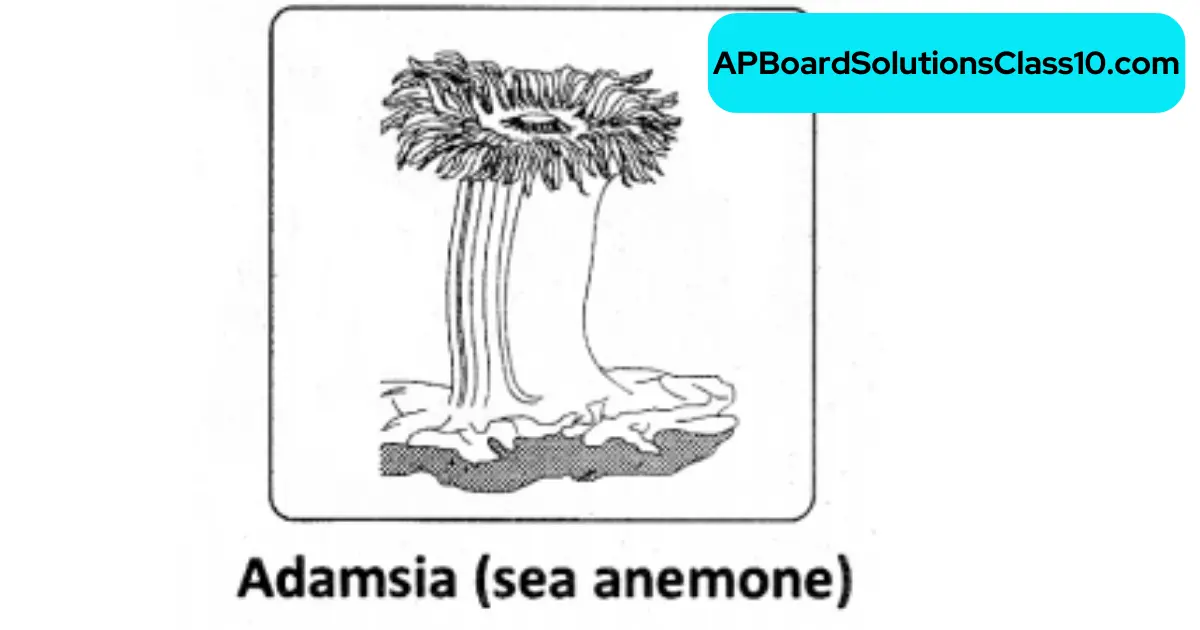
Question 14.
Compare, and contrast cartilaginous and bony fishes.
Answer:
| Cartilaginous fishes | Bony fishes |
| 1) Caudal fin is heterocercal | 1) Caudal fin is diphycercal or homocercal. |
| 2) Scales if present placoid scales. | 2) Scales are ganoid, cycloid or ctenoid scales. |
| 3) Endoskeleton is entirely cartilage. | 3) Endoskeleton is bony. |
| 4) Mouth and nostrils are ventral. | 4) Mouth is usually terminal. |
| 5) Digestive tract opens into cloaca, if present. | 5) Digestive tract opens out by anus. |
| 6) Air bladder is absent. | 6) Air bladder Is often present. |
| 7) Fertilization is internal. Mostly viviparous, e.g: Scoliodon. | 7) Fertilization is external. Mostly oviparous, e.g: Catla catla |
Question 15.
Describe the process of longitudinal binary fission in Euglena.
Answer:
During the process of binary fission, the nucleus, basal granules, chromatophores, cytoplasm undergo division. The nucleus divides by mitosis into two daughter nuclei. Then the kinetosomes and the chromatophores also divide. At first, a longitudinal groove develops in the middle of the anterior end. This groove extends gradually towards the posterior end until the two daughter individuals are separated. One daughter Euglena retains the parental flagella. The other daughter individual develops new flagella from the newly formed basal granules. The stigma, paraflageliar body and contractile vacuole of the parent disappear. They develop afresh in both the daughter euglenae. The longitudinal binary fission is known as symmetrogenic division, because the two daughter euglenae resemble each other like ‘mirror images’.
Question 16.
Prevention is better than cure.’ Justify with regard to TDA abuse.
Answer:
Prevention and Control : The age-old adage of Prevention is better than cure holds true here also. Some of the measures useful for prevention and control of TDA abuse among the adolescents are :
- Avoid undue parental pressure : Every child has his / her own choice, capacity and personality. The parents should not force their children to perform beyond their capacity by comparing them with others in studies, games, etc.
- Responsibility of parents and teachers : They should look for the danger signs and counsel such students who are likely to get into the ‘trap’.
- Seeking help from peers : If peers find some one abusing drugs or alcohol, immediately it should be brought to the notice of their parents or teachers so that they can guide them appropriately.
- Education and counselling : Educating and counselling the children to face problems, stress and failures as a part of life.
- Seeking professional and medical help : A lot of help is available in the form of highly qualified psychologists, psychiatrists and de-addiction and rehabilitation programmers.
Question 17.
Draw a neat and labelled diagram of the salivary apparatus of cockroach.
Answer:
Question 18.
Write the critical notes on the following :
a) Eutrophication
b)Biological magnification
Answer:
a) Eutrophication : Natural ageing of a lake by nutrient enrichment of its water is known as eutrophication. In a young lake, the water is cold and clear, supporting little life. Gradually nutrients, such as nitrates and phosphates are carried into the lake via streams, in course of time. This encourages the growth of aquatic algae and other plants.
Consequently the animal life proliferates, and organic matter gets deposited on the bottom of the lake. Over centuries, as silt and organic debris piles up, the lake grows shallower and warmer. As a result, the aquatic organisms thriving in the cold environment are gradually replaced by warm – water organisms. Marsh plants appear by taking root in the shallow regions of the lake. Eventually, the lake gives way to large masses of floating plants (bog) and finally converted into land.
b) Bio-magnification :
Increase in the concentration of the pollutant or toxicant at successive trophic levels in an aquatic food chain is called Biological Magnification or Bio – magnification. This happens in the instances where a toxic substance accumulated by an organism is not metabolized or excreted and thus passes on to the next higher trophic level. This phenomenon is well known regarding DDT and mercury pollution.
As shown in the above example, the concentration of DDT is increased at successive trophic levels starting at a very low concentration of 0.003 ppb (ppb = parts per billion) in water, which ultimately reached an alarmingly high concentration of 25 ppm (ppm = parts per million) in fish-eating birds, through bio-magnification. High concentrations of DDT disturb calcium metabolism in birds, which causes thinning of egg shell and their premature breaking, eventually causing decline in bird populations.
Section – C (2 × 8 = 16)
Note : Answer any two questions in 60 lines each.
Question 19.
Describe the life cycle of Plasmodium vivax in mosquito with a neat labelled diagram.
Answer:
Life cycle of Plasmodium in mosquito (The mosquito phase)- Ross cycle : When a female Anopheles mosquito bites and sucks the blood of a malaria patient, the gametocytes along with the other stages of the erythrocytic cycle reach the crop of mosquito. Here all the stages are digested except the gametocytes. Further part of the life cycle consists of :
i) Gametogony
ii) Fertilization
iii) Formation of ookinete & oocysts
iv) Sporogony
i) Gametogony : The formation of male and female gametes from the gametocytes is called gametogony. It occurs in the lumen of the crop of mosquito.
Formation of male gametes: During this process, the nucleus of microgametocyte divides into eight daughter nuclei called pronuclei which reach the periphery. The cytoplasm is pushed out in the form of eight flagella like processes. Into each flagellum like process, one pronucleus enters and forms a micro gamete or male gamete. These male gametes show lashing movements like flagella and get separated from the cytoplasm of microgametocyte. This process is called exflagellation.
Formation of female gamete: The female gametocyte undergoes a few changes and transforms into a female gamete. This process is called maturation. The nucleus of the female gamete moves towards the periphery and the cytoplasm at that point forms a projection. This projected region is called the fertilization cone.
ii) Fertilization: The fusion of male and female gametes is called fertilization. It also occurs in the lumen of the crop of the mosquito. When an actively moving male gamete comes into contact with the fertilization cone of the female gamete, it enters it. The pronuclei and cytoplasm of these two gametes fuse with each other, resulting in the formation of a synkaryon. Since the two gametes are dissimilar in size, this process is known as anisogamy. The female gamete that bears the synkaryon is called the zygote which is round and non – motile.
iii) Formation of ookinete and oocysts : The zygote remains inactive for some time and then transforms into a long, slender, motile, vermiform ookinete or vermicule within 18 to 24 hours. It pierces the wall of the crop and settles beneath the basement membrane. It becomes round and secretes a cyst around its body. This encysted ookinete is now called oocyst. About 50 to 500 oocysts are formed on the wall of the crop and appear in the form of small nodules. (Sir Ronald Ross identified these oocysts for the first time).
iv) Sporogony : The formation of sporozoites in the oocysts is called sporogony. According to Bano, the nucleus of the oocyst first undergoes reduction division followed by repeated mitotic divisions resulting in the formation of about 1,000 daughter nuclei. Each bit of nucleus is surrounded by a little bit of the cytoplasm and transforms into a sickle shaped sporozoite. Oocyst with such sporozoites is called sporocyst. When this sporocyst ruptures, the sporozoites are liberated into the haemocoel of the mosquito. From there, they travel into the salivary glands and are ready for infection. The life cycle of Plasmodium in mosquito is completed in about 10 to 24 days.
Question 20.
Describe the blood circulatory system of perlplaneta In detail and draw a neat and labelled diagram of It.
Answer:
Circulatory system of Periplaneta : The circulatory system helps in the transportation of digested food, hormones etc., from one part to another in the body. Periplaneta has an open type of circulatory system as the blood, or haemohymph, flows freely within the body cavity or haemocoel. Blood vessels are poorly developed and open into spaces. Visceral organs located in the haemocoel are bathed in the blood. The three main parts associ-ated with the blood circulatory system of Periplaneta are the haemocoel, heart, and blood.
Haemocoel : The haemocoel of cockroach is divided into three sinuses by two muscular, horizontal membranes, called dorsal diaphragm or ‘pericardial septum’ and ventral diaphragm. Both the diaphragms have pores. There is a series of paired triangular muscles, called alary muscles. Every segment has one pair of these muscles situated on the lateral sides of the body.
These are attached to the pericardial septum by their broad bases and to the terga by their pointed ends or apices. The three sinuses of the haemocoel are known as pericardial haemocoel or the ‘dorsal sinus’, the perivisceral haemocoel or the ‘middle sinus’ and eternal haemocoel or ‘vental sinus’ or ‘perineural sinus’. The middle sinus is very large as it contains most of the viscera. The dorsal and ventral sinuses are small as they have only heart and nerve cord, respectively.
Heart : the heart lies in the pericardial haemocoel or dorsal sinus. It is a long, muscular, contractile tube found along the mid dorsal line, beneath the terga of the thorax and abdomen. It consists of 13 chambers. Every chamber opens into the other present in front of it. Three of the thirteen chambers are situated in the thorax and ten in the abdomen. Its posterior end is closed while the anterior end is continued forward as the anterior aorta. At the posterior side of each chamber, except the last, there is a pair of small apertures called ostia’ one on each side. Ostia have valves which allow the blood to pass only into the heart from the dorsal sinus.
Blood : The blood of Periplaneta is colourless and is called haemolymph. it consists of a fluid called plasma, and free blood corpuscles or haemocytes, which are ‘phagocytic’. The phagocytes are large in size and can’ingest’ foreign particles such as bacteria. There is no respiratory pigment in the blood and so it plays no major role in respiration. The important functions of the blood are :
- It absorbs digested food from the alimentary canal and distributes it to the rest of the body.
- It brings nitrogenous wastes from all parts of the body to the excretory organs for their elimination.
- It carries defensive phagocytes to the places of infection where they engulf the germs and disintegrating tissue parts.
- It transports secretions of the ductless glands to the target organs.
Circulation of blood: The blood flows forward in the heart by the contractions of its chambers. At the anterior end of the heart, the blood flows into the aorta and from there it enters the sinus of the head. From’the head sinus, the blood flows into the perivisceral and sternal sinuses. On contraction of the alary muscles the pericardial septum is pulled down. This increases the volume of the pericardial sinus. Hence blood flows from the perivisceral sinus into the pericardial sinus through the appertures of the pericardial septum. On relaxation of the alary muscles, the pericardial septum moves upwards to its original position. This forces the blood, to enter the chambers of the heart through the ostia from the pericardial sinus.
Question 21.
Describe different types of food chains that exist in an ecosystem.
Answer:
Energy flows into biological systems (ecosystems) from the Sun. The biological systems of environment include several food levels called trophic levels. A trophic level is composed of those organisms which have the same source of energy and having the same number of steps away from the sun. Thus a plant’s trophic level is one, while that of a herbivore – two, and that of the first level carnivore – three. The second and third levels of the carni¬vores occupy fourth and fifth trophic levels respectively.
A given organism may occupy more than one trophic level simultaneously. One must remember that the trophic level represents a functional level. A given species may occupy more than one trophic level in the same ecosystem at the same time; for example, a sparrow is a primary consumer when it eats seeds, fruits, and a secondary consumer when it eats insects and worms.
The food energy passes from one trophic levels to another trophic level mostly from the lower to higher trophic levels. When the ‘path of food energy is ‘linear’, the components resemble the ‘links’ of a chain, and it is called ‘food chain’. Generally a food chain ends with decomposers. The three major types of food chains in an ecosystem are Grazing Food Chain, Parasitic Food Chain and Detritus Food Chain.
I. Grazing Food Chain (GFC): It is also known as predatory food chain. It begins with the green plants (producers) and the second, third and fourth trophic levels are occupied by the herbivores, primary carnivores and secondary carnivores respectively. In some food chains there is yet another trophic level – the climax carnivores. The number of trophic levels in food chains varies from 3 to 5 generally. Some examples for grazing food chain (GFC) are given below.
II. Parasitic food chain : Some authors included the ‘parasitic Food Chains’ as a part of the GFC. As in the case of GFCs, it also begins with the producers, the plants (directly or indirectly). However, the food energy passes from large organisms to small organisms in the parasitic chains. For instance, a tree which occupies the 1st trophic level provides shelter and food for many birds. These birds host many ectoparasites and endo-parasites. Thus, unlike in the predator food chain, the path of the flow of energy includes fewer, large sized organisms in the lower trophic levels, and numerous, small sized organisms in the successive higher trophic levels.
III. Detritus Food Chain : The detritus food chain (DFC) begins with dead organic matter (such as leaf litter, bodies of dead organisms). It is made up of Decomposers which are heterotrophic organisms, mainly the ‘fungi’ and ‘bacteria’. They meet their energy and nutrient requirements by degrading dead organic matter or detritus. These are also known as saprotrophs (sapro : to decompose)
Decomposers secrete digestive enzyme that breakdown dead and waste materials (such as faeces) into simple absorbable substances. Some examples of detritus food chains are :
- Detritus (formed from leaf litter) – Earthworms – Frogs – Snakes.
- Dead animals – Flies and maggots – Frogs – Snakes.
In an aquatic ecosystem, GFC is the major ‘conduit’ for the energy flow. As against this, in a terrestrial ecosystem, a much larger fraction of energy flows through the detritus food chain than through the GFC. Detritus food chain may be connected with the grazing food chain at some levels. Some of the organisms of DFC may form the prey of the GFC animals. For example, in the detritus food chain given above, the earthworms of the DFC may become the food of the birds of the GFC. It is to be understood that food chains are not ‘isolated’ always.

